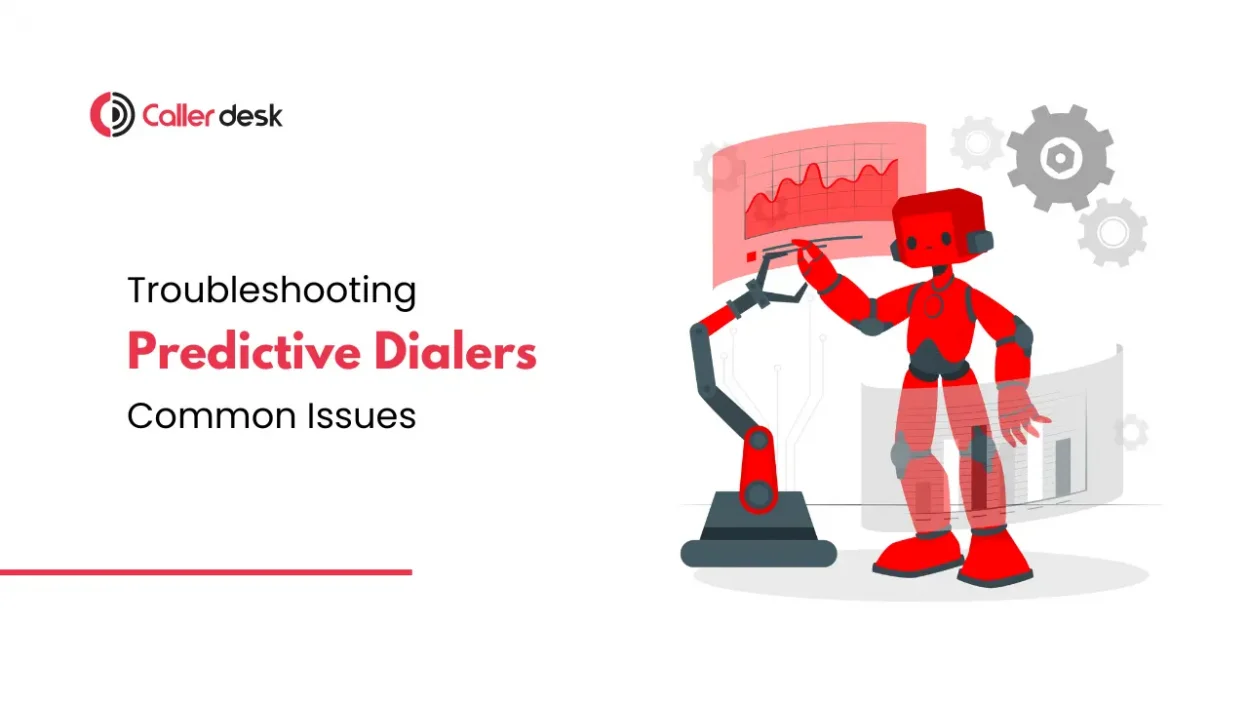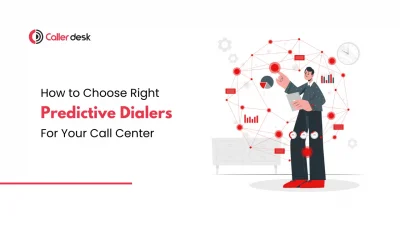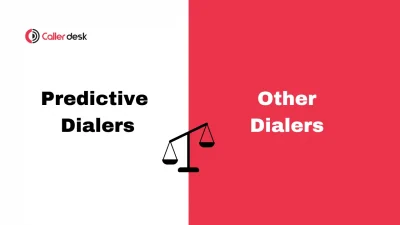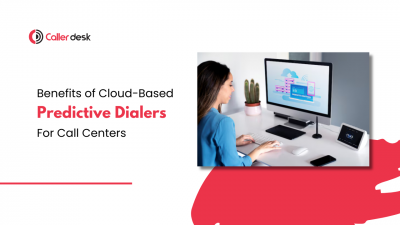Are your predictive dialers causing more headaches than solutions? If you’re struggling with dropped calls, low connection rates, or compliance issues, you’re not alone. While predictive dialers are designed to boost call center’s efficiency, but they can also bring their own set of challenges. But the good news is most of these issues can be easily fixed with the right approach.
In this blog, we will discuss common issues with predictive dialers and effective ways to troubleshoot them.
Common Issues with Predictive Dialer and How to Fix Them
1. Dropped Calls and Low Answer Rates
It can be really frustrating when calls suddenly drop or not many people are answering. This typically occurs due to a poor internet connection, incorrect dialer settings, or outdated phone numbers in your contact list.
For this you need to:
- Check Your Network: Make sure your internet is strong enough to handle the number of calls your dialer is making. A weak connection often causes dropped calls.
- Optimize Dialing Ratios: Set your dialer to call fewer numbers at once. If it calls too many numbers too quickly, it can cause problems like dropped calls.
- Review Call Lists: Regularly check your contact lists to remove any old or wrong numbers. This helps you avoid unanswered calls and saves time.
2. Agent Idle Time
Predictive dialers aim to keep agents consistently engaged, but there are times when agents end up waiting for the next call. This happens when the dialer isn’t properly predicting agent availability.
For this you need to:
- Adjust Dialer Settings: Adjust your dialer so it better connects the number of calls to the number of agents who are available, so calls reach agents right when they’re ready.
- Monitor Call Volumes: Regularly check how many calls are being made and adjust your approach If needed, change your plan—like calling at a different time of day or adding more agents when it’s busy.
3. Compliance Issues
Regulations like the TCPA (Telephone Consumer Protection Act) are essential to avoid legal issues, but predictive dialers can sometimes accidentally break the rules—especially if too many calls are made without proper consent.
For this you need to:
- Use Compliance Filters: Implement software that automatically checks and removes numbers on Do Not Call lists before dialing.
- Follow Safe Dialing Practices: Make sure your dialer follows legal limits, like how often you can call the same number.
4. Call Quality Concerns
When calls have issues like echoes, delays, or background noise, it breaks the flow of conversation between agents and customers. These problems can lead to misunderstandings, frustration, and an overall poor communication experience, making it challenging for agents to handle customers effectively.
For this you need to:
- Test Your Equipment: Regularly check your headsets, microphones, and other equipment to make sure they work well.
- Upgrade Your VoIP Service: If you’re using a VoIP service, consider upgrading to a higher-quality provider or plan to ensure better call clarity.
- Optimize Network Settings: Prioritize your network for voice calls to reduce delays and improve call quality.
5. Challenges with CRM System Integration
For a predictive dialer to work properly, it needs to connect smoothly with your Customer Relationship Management (CRM) system. If they don’t work together well, you could lose important data or end up with incorrect information, which can break your customer interactions.
For this you need to:
- Check Compatibility: Ensure that your predictive dialer and CRM are fully compatible and up to date with the latest versions.
- Customize Integration Settings: Adjust the settings so that data flows smoothly between the dialer and the CRM. This helps keep your information accurate and up to date.
- Regular Updates: Regularly update both the dialer and CRM software. Updates can fix compatibility problems and make the systems work better together, helping you avoid future problems.
Best Practices for Maintaining Predictive Dialers
Even after fixing issues,, regular maintenance and best practices can prevent future problems. Here are some tips:
- Regularly Review Settings: Regularly check and adjust your dialer settings so they match your current campaign goals.
- Track Performance Metrics: Regularly monitor key performance indicators (KPIs) like call drop rates and agent idle time, enabling you to identify and resolve issues promptly.
- Train Your Team: Ensure that your agents and IT staff are well-trained in using and maintaining the predictive dialer system.
Sometimes, problems with predictive dialers are too complex to fix on your own. If the issues persist, even after you’ve tried to solve them, it may be time to consult with a professional service provider or IT specialist. They can offer in-depth insights and advanced solutions that basic troubleshooting might not be able to fix.
Conclusion
Predictive dialers can greatly improve call center efficiency, but they can also present some challenges. By knowing the common problems and how to fix them, you can keep your system running smoothly. Keep these tips in mind, and you’ll be ready to handle any issues that come up.





